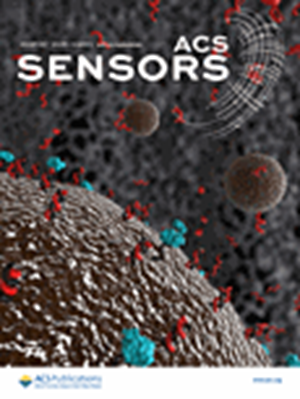Programmable Transcriptional–Translation Active Sensors for miRNA-Responsive Gene Imaging and Theranostics in Mammalians
IF 8.2
1区 化学
Q1 CHEMISTRY, ANALYTICAL
引用次数: 0
Abstract
Synthetic gene circuits are logical circuits constructed by various biological elements based on engineering principles. However, the majority of current synthetic gene circuits are modulated through exogenous factors or endogenous inhibitory substances, which results in redundant structures and low efficiency, thereby greatly limiting their application scenarios. In this study, we developed a miCU sensor system comprising the Gal4-VP16 gene element, which enables real-time targeted monitoring of miR-9 and miR-124a during neural differentiation through transcriptional–translation two-step active regulation with a relatively low background signal. Additionally, the functional gene was replaced by P21 through the programmability of miCU, thereby achieving miRNA-mediated cell cycle arrest and suppression of cell migration in tumor cells. Furthermore, by strategically substituting the target miRNA with miR-155 and concurrently introducing the therapeutic gene Nrf2 into the miCU system, the integration of disease diagnosis and treatment in lipopolysaccharide (LPS)-induced acute liver injury (ALI) mouse models has been successfully achieved. Our study presented a programmable miRNA-responsive gene regulation platform, which may offer a robust tool for precise diagnosis and treatment in disease settings.

用于哺乳动物mirna反应性基因成像和治疗的可编程转录翻译主动传感器
合成基因电路是以工程原理为基础,由各种生物元件构成的逻辑电路。然而,目前大多数合成基因回路都是通过外源因子或内源性抑制物质进行调控,导致结构冗余,效率低,极大地限制了其应用场景。在本研究中,我们开发了一个包含Gal4-VP16基因元件的miCU传感器系统,通过转录-翻译两步主动调控,在相对较低的背景信号下,实时靶向监测神经分化过程中的miR-9和miR-124a。此外,通过miCU的可编程性,功能基因被P21取代,从而在肿瘤细胞中实现mirna介导的细胞周期阻滞和细胞迁移抑制。此外,通过战略性地用miR-155替代目标miRNA,同时将治疗基因Nrf2引入miCU系统,成功实现了脂多糖(LPS)诱导的急性肝损伤(ALI)小鼠模型的疾病诊断和治疗一体化。我们的研究提出了一个可编程的mirna反应性基因调控平台,这可能为疾病的精确诊断和治疗提供一个强大的工具。
本文章由计算机程序翻译,如有差异,请以英文原文为准。
求助全文
约1分钟内获得全文
求助全文
来源期刊

ACS Sensors
Chemical Engineering-Bioengineering
CiteScore
14.50
自引率
3.40%
发文量
372
期刊介绍:
ACS Sensors is a peer-reviewed research journal that focuses on the dissemination of new and original knowledge in the field of sensor science, particularly those that selectively sense chemical or biological species or processes. The journal covers a broad range of topics, including but not limited to biosensors, chemical sensors, gas sensors, intracellular sensors, single molecule sensors, cell chips, and microfluidic devices. It aims to publish articles that address conceptual advances in sensing technology applicable to various types of analytes or application papers that report on the use of existing sensing concepts in new ways or for new analytes.
 求助内容:
求助内容: 应助结果提醒方式:
应助结果提醒方式:


